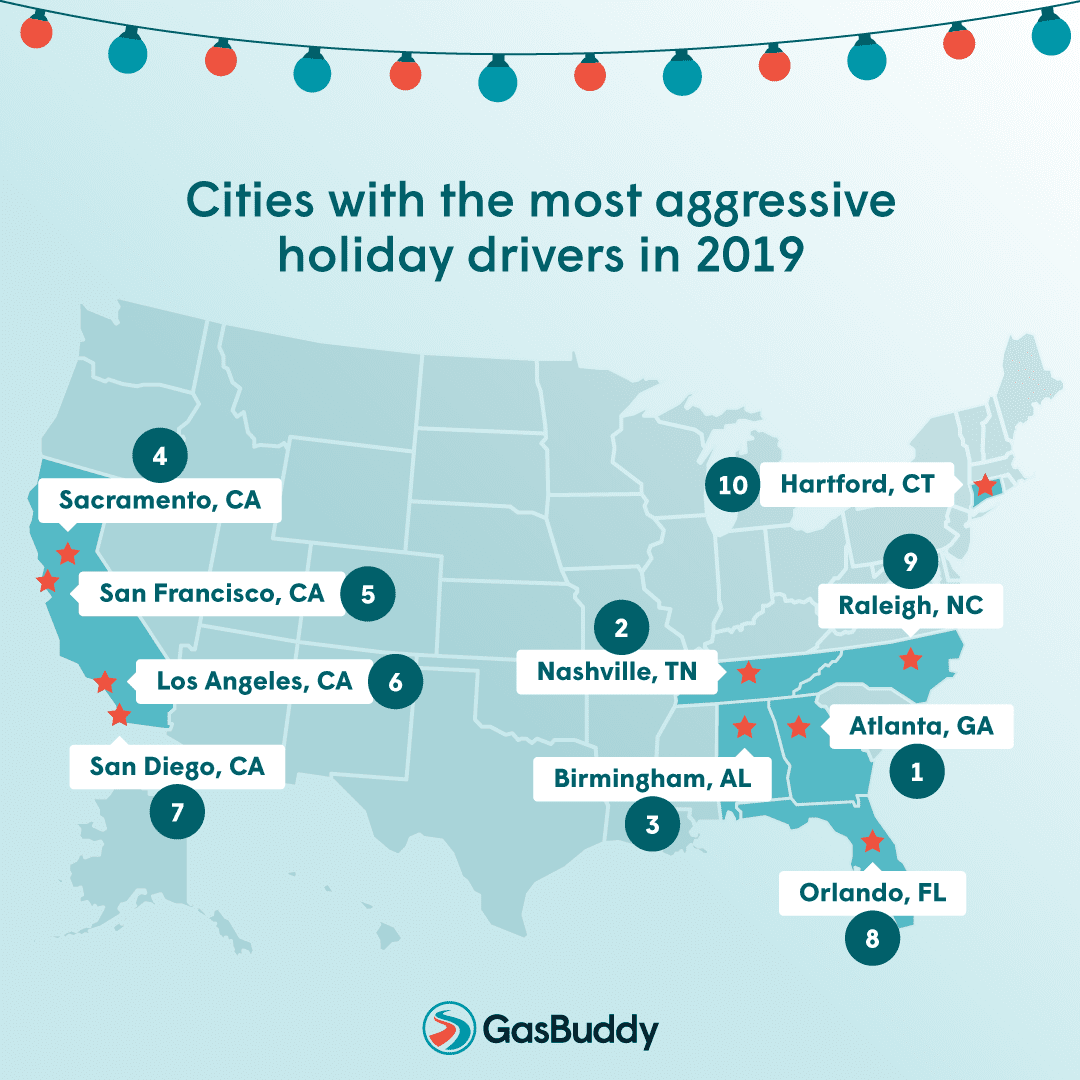BOSTON — The holidays are filled with travel that involves busy schedules, last-minute shopping, and even holiday jeers instead of cheers on the road. In fact, GasBuddy, the smartphone app helping consumers avoid paying full price for fuel, reveals that consumers driving in certain cities across the United States are nearly 20% more aggressive than the average driver during the holidays, reducing fuel mileage as much as 40% and wasting money on gas.
GasBuddy examined millions of Drives in the U.S. during the Thanksgiving holiday week defined as Nov. 27 – Dec. 1, 2019, noting the frequency of aggressive events while driving: rapid acceleration, hard braking and speeding.

The top 10 cities with the most aggressive holiday drivers are:
- Atlanta
- Nashville
- Birmingham, Ala.
- Sacramento, Calif.
- San Francisco
- Los Angeles
- San Diego
- Orlando. Fla.
- Raleigh, N.C.
- Hartford, Conn.
Complete city rankings can be found here.
The study found that drivers were most aggressive on the actual holiday, with the highest number of events happening during Thanksgiving day. Black Friday is when drivers are the least aggressive, followed by Wednesday, the day before Thanksgiving.
“Peace and good-will towards other drivers will go a long way this holiday season, ” said Patrick DeHaan, head of petroleum analysis at GasBuddy. “Not only is road rage dangerous, it guzzles any extra holiday savings by reducing fuel efficiency, which makes driving like a Scrooge wasteful and expensive.”
The most frequent aggressive driving habits during the holidays are hard-braking (1), speeding (2) and rapid acceleration (3).
GasBuddy recommends drivers stay calm on the road to stay safe and save money on their fuel costs. Motorists can use GasBuddy’s optional, opt-in Drives feature today to evaluate how ‘scroogy’ (and fuel-wasteful) they are on the road.
Methodology
The findings were compiled using data from GasBuddy’s optional, opt-in Drives Feature in the GasBuddy app that offers drivers an assessment of their driving habits during their trip in an effort to improve fuel efficiency, mapping out when and where a poor driving habit occured.
GasBuddy examined Drives in the top 50 metropolitan areas by population as defined by the United States Census Bureau from Nov. 27 – Dec. 1, 2019, noting the frequency of an aggressive driving event while driving, whether it be speeding, hard braking or accelerating. The aggressive driving percentage within the report compares the average number of aggressive driving events per trip for drivers in a particular metropolitan area to the average number of aggressive driving events per trip for the average American driver.
About GasBuddy
GasBuddy’s mission is to help consumers avoid paying full price for fuel. As the leading source for crowdsourced, real-time fuel prices at more than 150,000 gas station convenience stores in the U.S., Canada and Australia, millions of drivers use the GasBuddy app and website every day to find gas station convenience stores based on fuel prices, location and ratings/reviews. GasBuddy’s first-of-its-kind fuel savings program, Pay with GasBuddy, has saved Americans more than $10 million at the pumps since its launch in 2017. The company’s business solutions suite, GasBuddy Business Pages, provides Fuel Marketers and Retailers their best opportunity to maintain their station information, manage their brand, and promote to their target consumer audience. For more information, visit http://www.gasbuddy.com.




